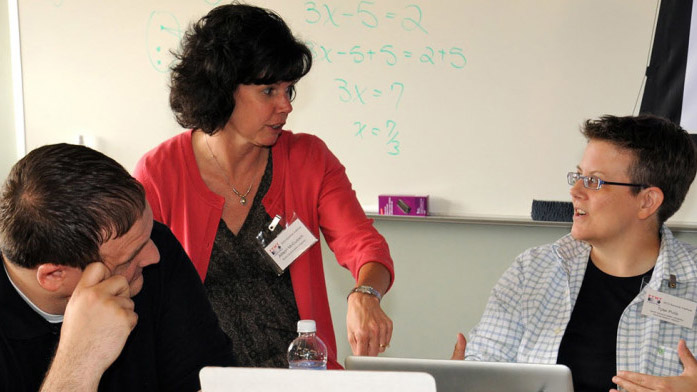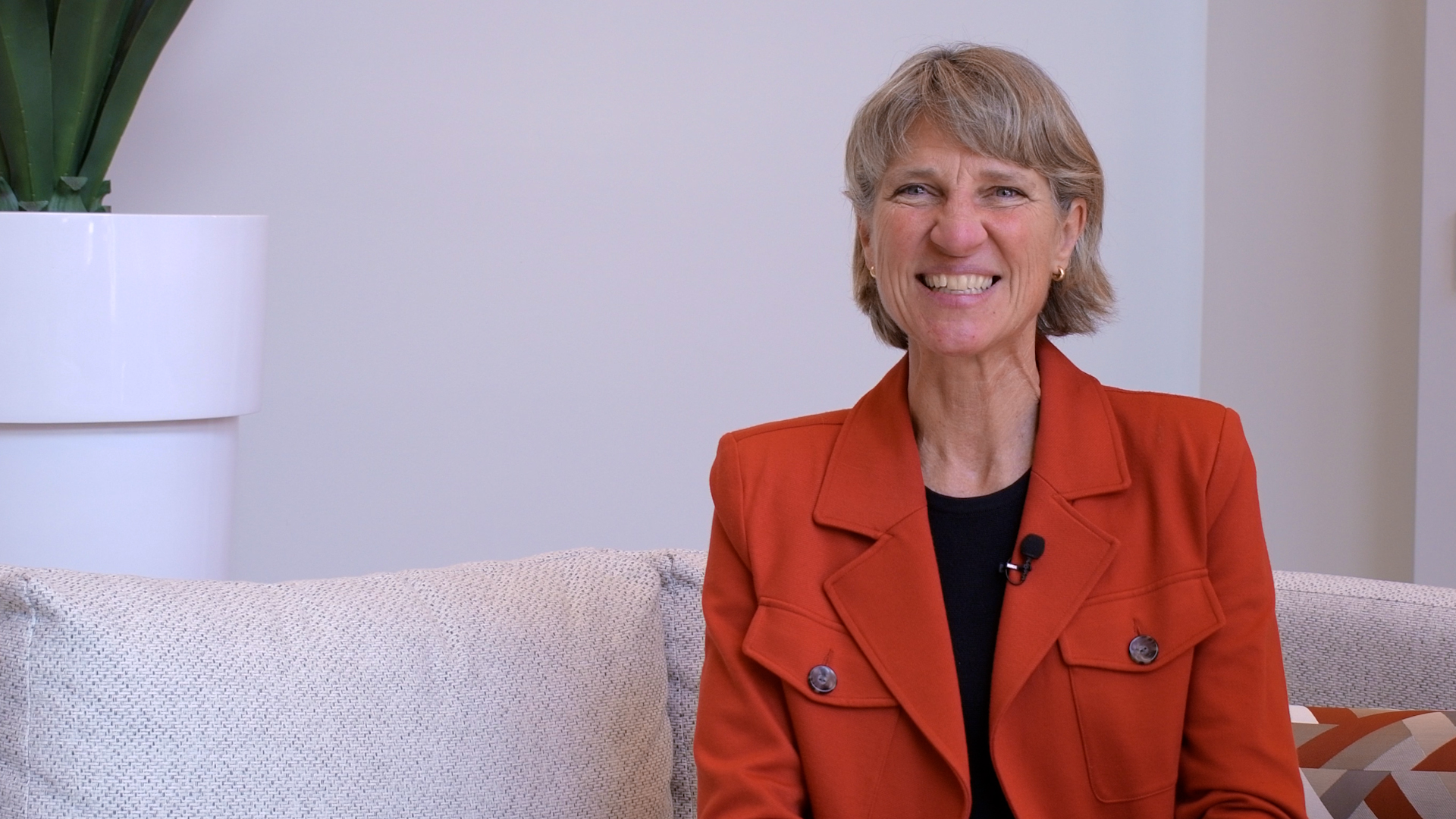Where Math and Technology Meet

Equipping teachers with the right classroom tools goes a long way in helping students succeed in mathematics. For more than a decade, Preparing to Teach Mathematics with Technology (PTMT) has helped teachers integrate the latest technology in their lessons to better engage students.
Karen Hollebrands, Hollylynne Lee and Allison McCulloch, all professors in the Science, Technology, Engineering and Mathematics Education (STEM Ed.) Department, lead PTMT in collaboration with the Friday Institute. Each has worked on developing materials integrating mathematical tasks, technological tools and pedagogical strategies for middle and high school teachers. These materials focus on teaching algebraic, geometric and statistical topics with technology.
“When we started PTMT, there was a course at NC State called ‘Teaching Math with Technology’ but we had no books for the course,” said Lee, a professor of mathematics and statistics education. “We had teachers who needed training in how to use new technology, but no materials to prepare them.”
In order to begin work on a solution to this problem, project leaders pursued a grant from the National Science Foundation. Since 2005, PTMT has received three grants for more than $1.2 million in funding for research and materials development.
Researchers first sought to create a curriculum example for preparing teachers to teach data analysis and probability through technology, then focused on integrating technology into geometry and algebra curricula. Throughout each phase, helping teachers make informed decisions about using technology in their classrooms remained a priority.
“PTMT is opening up doors to expanding upon what teachers already do in their classrooms, but changing their approach in ways that broadens the scope of what is possible in mathematics education,” said Ryan Smith, assistant professor in the Department of Mathematics and Science Education at the University of Georgia’s College of Education and a former NC State graduate student involved with PTMT.
Reaching teachers with new educational materials, including textbooks, began with the development of a nationwide community of university faculty who teach future math teachers. Essentially beta testers for PTMT educational materials, these faculty members provided feedback on draft materials to aid in creating classroom-tested curricula.
Through three grants, project leaders fine-tuned modules on data analysis, geometry and algebra. Testers used materials in their own classes to test the efficacy of the content on future educators. Since the PTMT project started, the tester network has expanded from 20 professors to more than 200 nationwide.
“Writing curricula is a difficult process, and our faculty tester community allowed us to create strong materials that would really impact mathematics educators,” said McCulloch, an associate professor. “Being able to draw upon the experience of teacher educators helped us be creative in integrating new technology into education that helps students think critically and engage with mathematics in new ways.”
Of course, with the constant evolution of technology, PTMT collaborators have changed the way they presented materials to testers and other university faculty over the years. To further expand the program’s reach, researchers developed a web portal that gives free access to materials and technology demonstrations for each of the three modules.
The portal includes the texts An Integrated Approach to Data Analysis and Probability, An Integrated Approach to Geometry and An Integrated Approach to Algebra. With downloadable technology tasks, video clips and instructor resources (including guiding framework, suggested readings and Common Core alignment), the portal makes it even easier for teacher educators to use materials to help their teachers gain an in-depth understanding of technology that can revolutionize the way mathematics is taught.
“Our goal is to allow anyone who wants access to have access, because it is critically important that math teacher educators have access to high-quality materials to prepare teachers,” said Hollebrands, professor of mathematics education. “With this open access, PTMT is helping bridge the digital divide in classrooms, and educating teachers on how to take advantage of technologies that students are increasingly using at home.”
To date, the PTMT materials have reached more than 3,200 undergraduates, and PTMT has received plenty of national attention. They’ve published 32 pieces of research, delivered 54 presentations and received awards from the National Technology Leadership Initiative. Their research has helped the field of mathematics education better understand how preservice teachers learn critical skills needed to use technology effectively to promote students’ learning of mathematics.
PTMT project leaders aren’t done with their research, though. This fall, Lee, Hollebrands and McCulloch will follow recent NC State College of Education graduates into their classrooms to uncover further impacts of PTMT materials.
“We hope to continue the project’s influence by examining how teachers increase students’ ability to grasp mathematical concepts with everything from computers to tablets and more,” said Lee. “We’ve been making strides for more than a decade, and our work has gone a long way in making math make sense through technology.”
Learn more about the progress of PTMT and its impact on teacher education nationwide.
- Categories:


